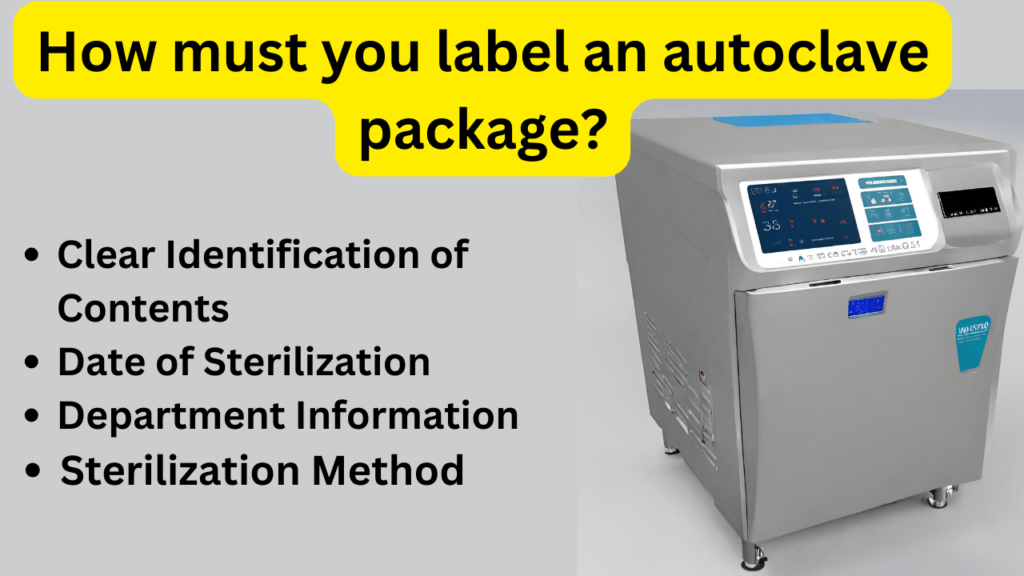Here you will learn about “How must you label an autoclave package?”.

In laboratories, healthcare facilities, and various industries, autoclaves serve as the trusted workhorses for sterilization. Autoclaves use high-pressure steam to eradicate microorganisms from equipment, glassware, and other materials.
However, the sterilization process isn’t complete without proper labeling. Labeling autoclave packages is not merely a formality; it’s an essential practice for safety, organization, and traceability.
Here is the main points you must mention in all autoclave package.
1. Clear Identification of Contents
One of the primary purposes of labeling an autoclave package is to clearly identify the contents. This is crucial for anyone handling the package, as it allows them to understand what’s inside and take appropriate precautions. Ensure that the label prominently displays the name of the sample or equipment being sterilized. This identification can prevent confusion and potential cross-contamination.
2. Date of Sterilization
Another critical piece of information to include on the label is the date of sterilization. This date is important for tracking the sterilization cycle’s efficacy and determining the expiration of the sterility of the contents. If the package holds items with a limited shelf life, knowing the date of sterilization is indispensable.
3. Owner/Department Information
Labeling should also include information about the owner or the department responsible for the sterilized items. This helps in the traceability of equipment and samples back to their owners or specific areas of use. In the event of any issues or recalls, this information becomes invaluable.
4. Sterilization Method
Specify the sterilization method used, which, in this case, is the autoclave. Different sterilization methods have different requirements and risks associated with them. By indicating the method used, you ensure that individuals handling the package are aware of the specific precautions necessary for that method.
5. Safety Symbols and Hazard Warnings
Depending on the contents of the package, you might need to include safety symbols and hazard warnings. For instance, if the contents are hazardous materials or materials sensitive to certain conditions, these should be clearly indicated on the label. Safety symbols and warnings help protect personnel and ensure proper handling.
6. Expiration Date
For certain materials or samples with an expiration date, it’s advisable to note this on the label. This is especially important in healthcare settings, where sterilized medical equipment often has a limited shelf life. Knowing the expiration date helps prevent the use of expired items, which could compromise patient safety.
7. Contact Information
Include contact information for someone responsible for the sterilized materials. This could be a lab manager, department head, or a designated contact person. This facilitates communication and inquiries, ensuring that any concerns or questions can be promptly addressed.
8. Color-Coding (Optional)
Some facilities use color coding as part of their labeling system. Assigning specific colors to different types of packages or materials can make identification quick and easy. While this is optional, it can enhance organization and efficiency, particularly in settings with high throughput.
Here’s the video of “How must you label an autoclave package”.